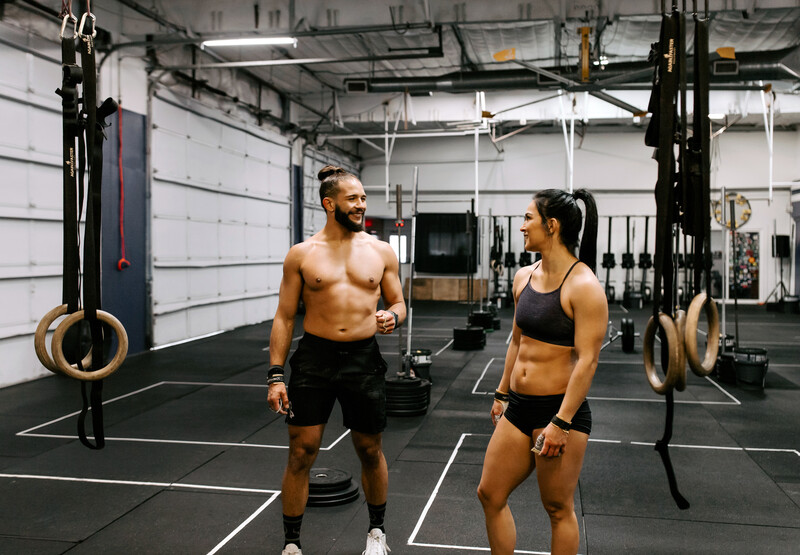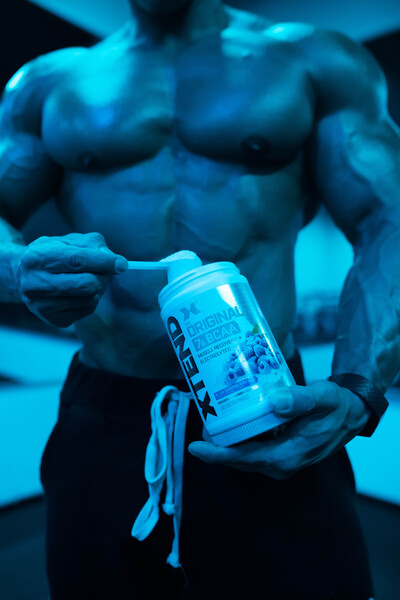By Erick Avila
Climbing into a tub full of ice or stepping inside a warm sauna is a post-workout ritual for many athletes. Hot and cold therapies have a long history of use among individuals looking to soothe sore muscles and accelerate post-workout recovery. Both types of therapies seek to achieve the same end goal of reducing muscle soreness and strength losses, but they work through opposite mechanisms. And even within the category of hot therapy and cold therapy there exist many different variations ranging from full body immersion in water to the use of wraps.
With so many variations of hot and cold therapies, it can be difficult settling on one. And once you decide on a hot/cold therapy, it can be just as challenging figuring out how to do it. When studies come out showing conflicting results for hot and cold therapies it makes people question whether it’s even worthwhile to try it but as elite athletes that have successfully used hot/cold therapies can attest, when it’s done right, you should feel refreshed.
We’re going to cover what exactly are hot and cold therapies, some of the most common forms of these therapies, and how to use them.
How to Use Cold Therapy for Muscle Recovery
Cold therapy, also called cryotherapy, involves exposure to cold temperatures which causes a decrease in tissue temperature to promote recovery. During cold therapy sessions, the body responds in ways that promote vasoconstriction (narrowing of blood vessels), reduced tissue metabolism, reduced oxygen utilization, reduced inflammation, and reduced muscle spasms.[1]
Some of the most common forms of cold therapy include:
- Cold Water Immersion: involves people putting their bodies in cold water, like an ice tub, whirlpool, or shower. Generally, in clinical studies on cold water immersion the temperatures range from 50-59 degrees Fahrenheit and the duration of immersion ranges from 1 - 15 minutes. [2,3]
One meta-analysis on cold water immersion after strenuous exercise found it to be effective at alleviating symptoms of Delayed Onset Muscle Soreness (DOMS) at the 24-, 48-, 72-, and 96-hour marks post exercise.[4] The researchers noted that cold water immersion was effective at improving muscle power recovery but not muscle strength recovery. A separate meta-analysis examined the effectiveness of cold-water immersion for preventing muscle soreness. The scientists concluded that there was some evidence that cold water immersion reduces DOMS after exercise compared to no intervention, but they noted that more high-quality research is required in this field.[5] And a third meta-analysis on the use of cryotherapy concluded that cold water immersion's beneficial effects seemed to be based more on subjective measures than objective (blood biomarkers) measures.[6]
- Whole Body Cryotherapy Chamber: involves people stepping into controlled chambers with temperatures ranging from –166 to –319 degrees Fahrenheit for 1-3 minutes on average. Research on whole body cryochamber therapy shows that the total number of sessions plays an important role in its effectiveness with 20 consecutive sessions being considered the minimum and 30 sessions the optimum number.[7]
- Cold Wraps: involves the use of ice bags, gel packs, and ice compression garments applied to body parts after exercise to promote recovery. Research on the application of localized cold compression shows it can induce vasoconstriction and lower microcirculation, with its effects lasting up to 30 minutes after its application.[8]
How to Use Heat Therapy to Relieve Pain
Hot therapy, also called thermotherapy, involves exposure to warm temperatures which cause an elevation in tissue temperature to promote recovery. During hot therapies, the body responds in ways that promote vasodilation (widening of blood vessels), increased tissue metabolism, and connective tissue extensibility.[9] It’s important to stay hydrated during hot therapies with an electrolyte rich drink like XTEND Original because the high temperatures will result in loss of electrolytes.*

Some of the most common forms of hot therapy include:
- Hot Water Immersion: involves people putting their bodies in warm water like Jacuzzis and hot springs. Generally, in clinical studies on warm water immersion the temperature ranges from 96 degrees Fahrenheit to 114 degrees Fahrenheit for 1-3 minutes on average. [10,11]
- Sauna Baths: involves the use of traditional saunas or Infared saunas. Traditional saunas utilize wood stoves or electric heaters to increase the room temperature as high as 158 to 212 degrees Fahrenheit. While Infared saunas utilize Infared elements to heat a room to temperatures of 104 to 140 degrees Fahrenheit. In most studies sauna bath duration ranges from 5 to 20 minutes on average but the length of time will vary based on individuals' tolerance to heat exposure. [12]
- involves the use of heated blankets, heated compression garments, and heating pads applied to body parts after exercise to promote recovery. Heat compression application can vary widely from 15 minutes to 8 hours. [13] Generally, for every 3 degrees increase in tissue temperature from heat wraps, metabolism doubles, promoting faster recovery.[14] Heat wraps can provide dry or moist heat. Research shows that moist heat modalities are more effective at transferring heat and heat penetration than dry modalities.[15] Lower temperature long duration application of heat wraps is thought to be more advantageous for penetrating deeper into tissue.[16] A small study found the application of continuous low level heat wrap therapy to offer a significant benefit at the prevention and early phase treatment of lower-back DOMS. [17]

Contrast Therapy: Hot and Cold for Pain & Injury
Contrast therapy involves alternating exposure to hot and cold temperatures. The thought process behind this is that by exposing the body to both temperatures a pulsing sensation can be created by stimulating vasoconstriction and vasodilation (constricting and widening of blood vessels).
The most common form of contrast therapy is contrast baths where people alternate exposure between a jacuzzi and a cold pool. On average contrast bath therapy lasts between 6- and 24-minutes total with the cold-water temperature being 59 degrees Fahrenheit or less and the warm water temperature being above 95 degrees Fahrenheit.[18] Other forms of contrast therapy include alternating between ice and hot packs and alternating between hot and cold showers.
In a systematic review on contrast therapy and exercise induced muscle damage, the researchers concluded that contrast therapy resulted in greater improvements to muscle soreness and reductions in muscle strength loss compared to passive recovery. But the researchers noted that when contrast therapy was compared to other recovery modalities like warm water immersion, cold water immersion, and active recovery, there was little evidence to support any treatment intervention as superior to the others.[19] While a separate meta-analysis compared the effects of cold-water immersion and contrast therapy on recovery in team sport athletes and found that while both therapy types were effective for perception of fatigue, neither was effective for perception of muscle soreness.[20]
One study compared contrast temperature therapy to active recovery and found contrast therapy to be effective for reducing lactate concentration and heart rate, but it had no effect on subsequent sprint performance.[21]
In a separate study, scientists compared the effects of using heat and cold wraps after an intense squat workout. The researchers found that both hot and cold wraps were effective for reducing muscle damage and pain compared to the control group. The researchers also noticed that heat wraps had a slight advantage over cold wraps for preserving muscle strength and reducing muscle damage. While cold wraps were superior over heat wraps for reducing pain.[22]
Which is Best: Hot vs Cold Therapy
In a review of the literature on hot and cold therapies, the researchers concluded that there was limited evidence to support cold therapies for DOMS and there was limited evidence to support heat therapies for DOMS.[23] Even in literature reviews in favor of this type of therapy, the researchers note that more high-quality research is needed in this field.
In most studies cited for this article, both cold and hot therapy were more effective than passive recovery (I.e doing nothing) after a workout for alleviating DOMS. When compared head-to-head, hot, cold and contrast therapies had fairly similar results.
Both recovery modalities have their advantages, with cold therapy being more effective for rapid reduction in pain sensation after an intense workout while heat therapy can preserve training adaptations and speed the overall recovery process.
Training status, exercise type, body composition, gender, duration, and temperature are all listed as factors that can impact the effectiveness of cold and hot therapies across various studies. With elite athletes of lower body fat composition showing a greater response to hot/cold therapies. And consistent longer duration exposure to hot/cold temperatures being more effective than short term exposure.
If you want to give hot, cold, and contrast therapy a try here are some key points to remember
- Temperature: Cold water immersions are in the 50–59-degree Fahrenheit range while hot water immersions are done in the 96–114-degree Fahrenheit range. When doing hot or cold therapy, be sure that the temperature is at an appropriate range.
- Duration: With techniques like whole body cryochamber it’s recommended that a minimum of 20 consecutive sessions be done for this therapy to be effective. While heat wraps show greater efficacy with longer duration use. Be consistent while doing hot or cold therapies for the recommended amount of time.
- Subjective: For some of these recovery methods, their benefits extend to reduced feelings of perceived fatigue and subjective feelings of recovery. So, finding a method that you find enjoyable and can do consistently is important.
- Hydration: If you’re going to be doing hot therapy, it can be easy to lose electrolytes in hot temperatures so be sure to hydrate. XTEND Original delivers a refreshing blend of electrolytes and 7 g of BCAAs to support muscle recovery and repair.*

*These statements have not been evaluated by the Food and Drug Administration. This product is not intended to diagnose, treat, cure, or prevent any disease.
References
[1] https://www.painphysicianjournal.com/current/pdf?article=MTU3&journal=20
[2] https://www.ncbi.nlm.nih.gov/pmc/articles/PMC6492480/
[3] https://pubmed.ncbi.nlm.nih.gov/23743793/
[4] https://pubmed.ncbi.nlm.nih.gov/21947816/
[5] https://pubmed.ncbi.nlm.nih.gov/22336838/
[6] https://pubmed.ncbi.nlm.nih.gov/26413718/
[7] https://www.ncbi.nlm.nih.gov/pmc/articles/PMC5411446/
[8] https://www.ncbi.nlm.nih.gov/pmc/articles/PMC3781860/
[9] https://www.painphysicianjournal.com/current/pdf?article=MTU3&journal=20
[10] https://www.ncbi.nlm.nih.gov/pmc/articles/PMC3633882/
[11] https://link.springer.com/article/10.1007%2Fs40279-013-0063-8
[12] https://www.ncbi.nlm.nih.gov/pmc/articles/PMC4493260/
[13] https://journals.lww.com/cjsportsmed/Fulltext/2017/07000/The_Efficacy_of_Sustained_Heat_Treatment_on.1.aspx
[14] https://journals.lww.com/cjsportsmed/Fulltext/2017/07000/The_Efficacy_of_Sustained_Heat_Treatment_on.1.aspx
[15] https://www.ncbi.nlm.nih.gov/pmc/articles/PMC3808259/
[16] https://www.ncbi.nlm.nih.gov/pmc/articles/PMC3808259/
[17] https://pubmed.ncbi.nlm.nih.gov/17023239/
[18] https://www.ncbi.nlm.nih.gov/pmc/articles/PMC3633882/
[19] https://www.ncbi.nlm.nih.gov/pmc/articles/PMC3633882/
[20] https://pubmed.ncbi.nlm.nih.gov/27398915/
[21] https://pubmed.ncbi.nlm.nih.gov/17339133/
[22] https://journals.lww.com/nsca-jscr/Fulltext/2015/11000/Cold_Vs__Heat_After_Exercise_Is_There_a_Clear.33.aspx
[23] https://www.tandfonline.com/doi/abs/10.1080/00325481.2015.992719





